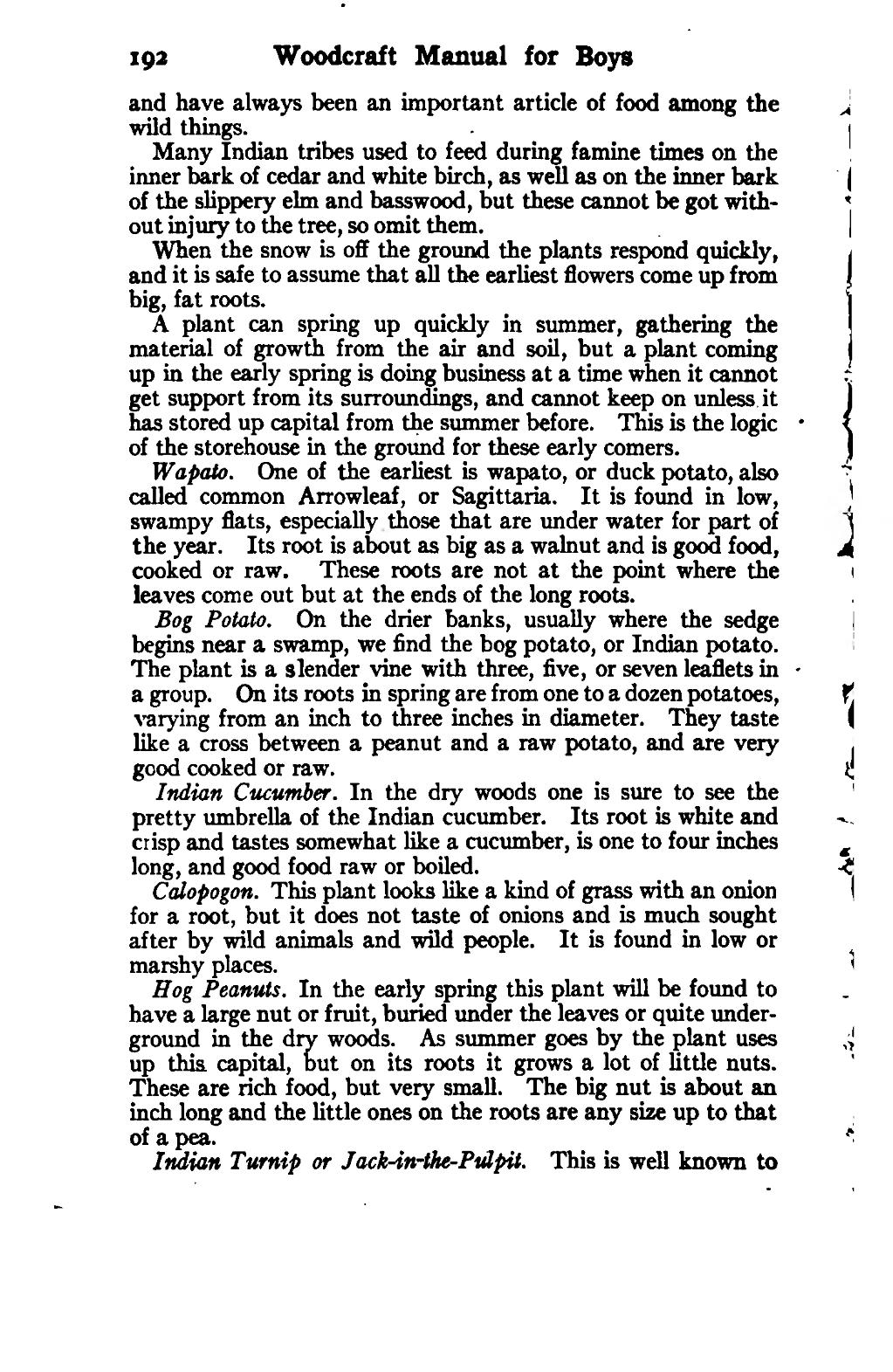192 Woodcraft Manual for Boys and have always been an important article of food among the wild things. Many Indian tribes used to feed during famine times on the inner bark of cedar and white birch, as well as on the' inner bark of the slippery elm and basswood, but these cannot be got with— out injury to the tree, so omit them. When the snow is 06 the ground the plants respond quickly, and it is safe to assume that all the earliest flowers come up from big, fat roots. A plant can spring up quickly in summer, gathering the material of growth from the air and soil, but a plant coming up in the early spring is doing business at a time when it cannot get support from its surroundings, and cannot keep on unlessit has stored up capital from the summer before. This is the logic ' of the storehouse in the ground for these early comers. Wapalo. One of the earliest is wapato, or duck potato, also called common Arrowleaf, or Sagittaria. It is found in low, swampy flats, especially those that are under water for part of the year. Its root is about as big as a walnut and is good food, cooked or raw. These roots are not at the point where the leaves come out but at the ends of the long roots. Bog Potato. On the drier banks, usually where the sedge begins near a swamp, we find the bog potato, or Indian potato. The plant is a slender vine with three, five, or seven leaflets in - a group. On its roots in spring are from one to a dozen potatoes, varying from an inch to three inches in diameter. They taste like a cross between a peanut and a raw potato, and are very good cooked or raw. Indian Cucumber. In the dry woods one is sure to see the pretty umbrella of the Indian cucumber. Its root is white and crisp and tastes somewhat like a cucumber, is one to four inches long, and good food raw or boiled. Calopogan. This plant looks like a kind of grass with an onion for a root, but it does not taste of onions and Is much sought after by wild animals and wild people. It is found in low or marshy places. Hog Peanuts. In the early spring this plant will be found to have a large nut or fruit, buried under the leaves or quite under- ground in the d woods. As summer goes by the plant uses up this capital, ut on its roots it grows a lot of little nuts. These are rich food, but very small. The big nut is about an inch long and the little ones on the roots are any size up to that of a . b133,: Turnip or Jack-in-the-Pulpil. This is well known to - L.A-+.-n___m_ _._fl __ x... f -r—._ “‘ 44*. ‘11“
Stránka:roll 1917.djvu/224
Z thewoodcraft.org
Tato stránka nebyla zkontrolována
